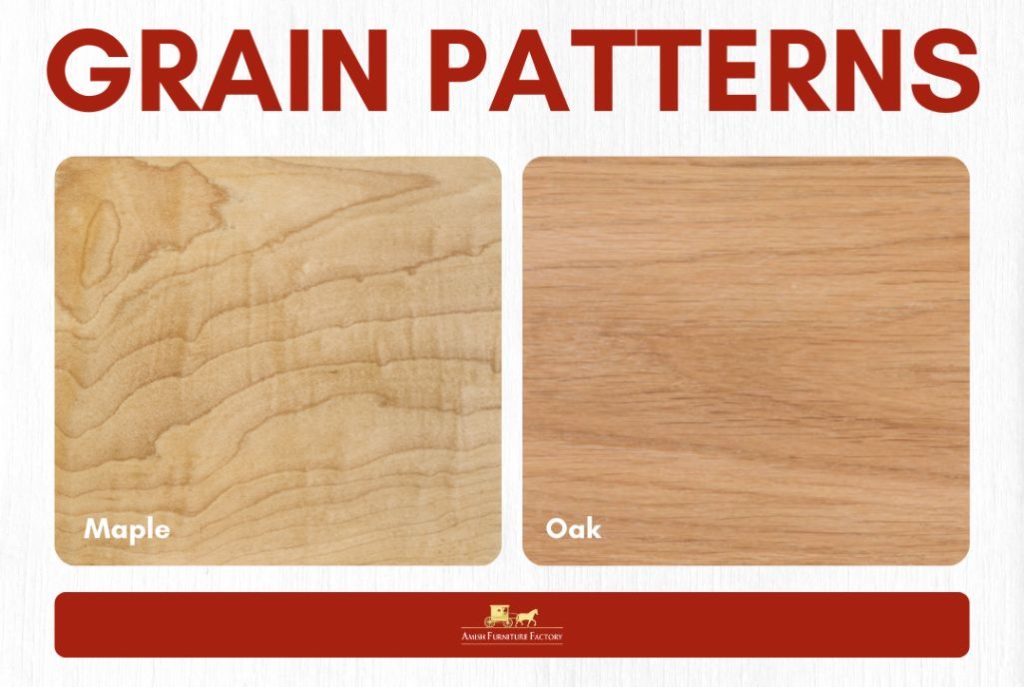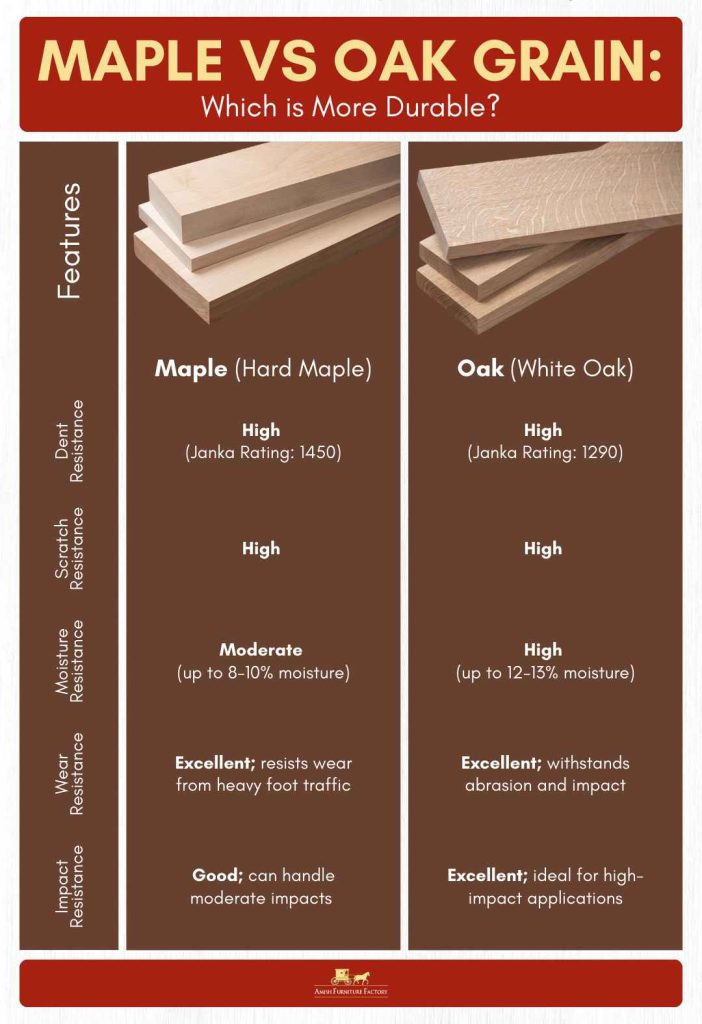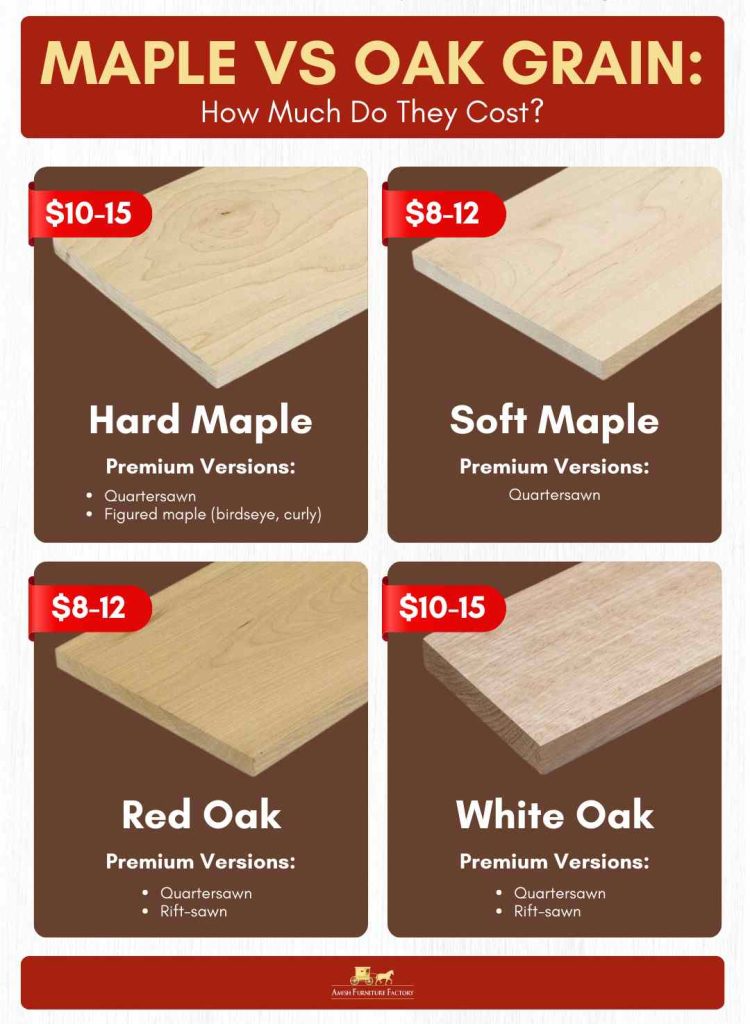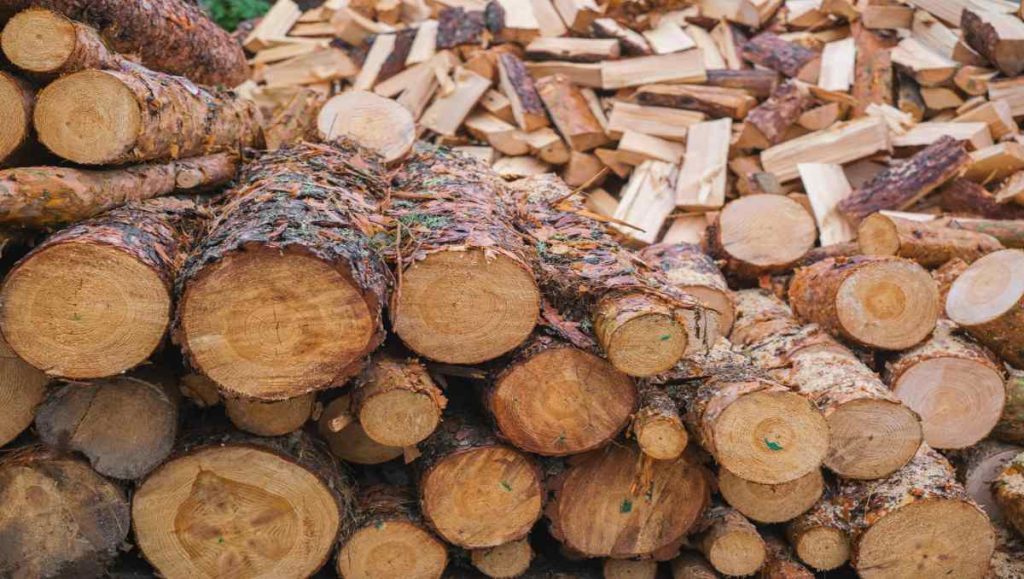
When it comes to selecting quality furniture, the type of wood you choose plays a crucial role. Among the many options available, maple and oak stand out as two of the most popular choices. Their unique grain patterns not only influence the aesthetics of a piece but also impact its structural performance, longevity, and overall feel.
Key Takeaways
- Maple has a smooth, subtle grain, perfect for modern and minimalist designs, while oak’s bold grain suits rustic, traditional looks.
- Both are durable, but maple resists dents and scratches, while oak naturally withstands moisture and insects, making it ideal for indoor and outdoor furniture.
- Maple’s light color and smooth surface work well with lighter finishes to brighten spaces, while oak’s grain enhances depth with darker stains, especially in traditional or rustic settings.
- Maple is eco-friendly due to its fast growth, and oak’s long-lasting nature reduces the need for replacements, making both sustainable choices for heirloom-quality furniture.
This article discusses distinct characteristics of both maple and oak, offering insights that go beyond their visual appeal.
Maple and Oak: An Overview of the Woods
Maple is an iconic hardwood known for its smooth, subtle grain and lighter color, making it an excellent choice for modern and minimalist designs. Its hardness provides exceptional resistance to dents and scratches, ensuring longevity in various applications. The even texture of maple appeals to contemporary aesthetics, offering a clean and refined look that complements sleek furnishings. This makes it a popular option for those seeking a bright and airy atmosphere in their interiors.
Oak, on the other hand, features a bold, prominent grain that adds warmth and character, making it ideal for rustic or traditional furniture. Its dramatic grain patterns contribute richness and depth, appealing to classic design preferences. Additionally, oak’s natural moisture resistance allows for both indoor and outdoor use, enhancing its versatility. Darker stains can further highlight oak’s texture, making it a favored choice for those looking to create a cozy and inviting environment. Both woods offer durability and visual appeal, making them excellent options for handcrafted furniture.

Durability and Longevity: Which Wood Lasts Longer?
Both maple and oak are durable, but they have different strengths. Maple is exceptionally hard and resistant to scratches and dents, making it ideal for high-traffic areas. However, its smooth grain can show scratches more easily. Oak, while not as hard, is more resilient against moisture and everyday wear and tear, making it suitable for outdoor use or humid environments. Its bold grain helps conceal minor imperfections. Ultimately, the best choice depends on your lifestyle and the specific needs of your furniture.

Color, Stain, and Finish options
Maple and oak each have unique colors and responses to stains that influence furniture design. Maple’s light, creamy hues can brighten a space, but its fine grain can make staining tricky, often resulting in uneven finishes. While modern water-based stains can help achieve a smoother look, darker stains may cause blotching if not applied carefully.
In contrast, oak, particularly white oak, features earthy tones and an open grain that absorbs dark stains well, creating a rich, textured finish. However, oak’s tannins can react with oil-based finishes, leading to discoloration over time. Choosing eco-friendly, water-based finishes can reduce environmental impact and preserve the wood’s natural beauty without harmful VOC emissions.
Eco-Friendliness and Sustainability
When it comes to eco-friendliness and sustainability, both maple and oak offer distinct benefits. Maple, with its faster growth rate and adaptability, is considered a more sustainable option. Its quick regeneration and abundance in North America reduce its environmental impact, making it a versatile choice for furniture.
Oak, while slower to mature, compensates with its exceptional durability, minimizing the need for frequent replacements. Its long-lasting strength, especially in outdoor projects, makes oak a sustainable option over time, often serving generations. Responsible harvesting of both woods further enhances their environmental appeal.
Cost Analysis: Which Offers Better Value?
When comparing the cost and style of maple and oak, both woods offer unique advantages. Maple is typically more affordable, with its even grain requiring less labor for a smooth finish, making it a practical choice for many. Its sleek, light color is ideal for modern, minimalist, or Scandinavian-style furniture, such as tables and cabinets.
Oak, on the other hand, may cost more due to the time required to finish its open grain, but the result is often a distinctive, artisanal appearance. Known for its durability, oak is perfect for classic, long-lasting pieces like dining tables and outdoor furniture.

Maintenance and Care: Keeping Your Furniture Looking Great
Caring for maple furniture is relatively straightforward. Regular dusting and occasional polishing will help maintain its smooth surface and keep it looking its best. Frequent polishing is recommended to prevent discoloration. However, it’s essential to avoid excessive exposure to direct sunlight, as this can lead to fading. If you notice any discoloration, a simple refinishing can restore its original beauty. Be sure to use products specifically designed for maple to ensure proper care.
Oak furniture, on the other hand, is known for its resilience and low maintenance needs. Regular cleaning and occasional refinishing will help preserve its appearance. The natural grain of oak excels at hiding minor scratches and dents, making it an excellent choice for busy households. To further maintain its rich texture and grain, regular oiling is advised, especially for outdoor projects. Managing humidity levels is crucial for both types of wood. Managing humidity levels is crucial for both types of wood. Using humidity monitors or dehumidifiers can help control moisture levels in high-moisture environments, prolonging the life of your furniture.
You might be interested in learning the difference between maple vs. walnut.
Choosing the Right Wood: Factors to Consider

When selecting the ideal wood for your furniture, the choice between maple and oak involves several important considerations. Each wood type offers distinct characteristics that can influence the style, durability, and functionality of your pieces. Here are the key factors to keep in mind:
Aesthetic Appeal: Consider the visual style you want to achieve. Maple has a light, clean look that suits modern designs, while oak offers a warm, rich appearance that complements traditional and rustic styles.
Durability: Evaluate the hardness and resistance to dents and scratches. Maple is one of the hardest domestic woods, making it highly durable, whereas oak is also strong but slightly softer.
Grain Pattern: Think about the grain and texture. Maple has a fine, even grain, while oak features a prominent, open grain that can enhance visual interest, especially with stains.
Moisture Resistance: Assess how each wood type performs in varying humidity. Oak has better moisture resistance, making it suitable for both indoor and outdoor applications, while maple can be more susceptible to warping in humid conditions.
Staining and Finishing: Determine how each wood reacts to stains and finishes. Maple can be challenging to stain evenly due to its fine grain, while oak readily absorbs darker stains, producing a rich finish. Consider eco-friendly options to maintain the wood’s natural beauty.
Sustainability: Consider the environmental impact of your wood choice. Look for sustainably sourced options to ensure that your furniture contributes positively to the ecosystem.
Discover stunning handcrafted pieces that highlight the distinct characteristics of both maple and oak. Visit Amish Furniture Factory to explore more and compare maple vs. oak grain in premium Amish furniture.
Conclusion
When it comes to choosing between maple and oak for your furniture, each wood type brings its own set of benefits. Maple offers a sleek, modern look with excellent durability, while oak provides a bold, classic appearance with outstanding strength and resistance. Both woods are excellent choices, depending on your style preferences and practical needs.
Frequently Asked Questions
Is it possible to refinish maple and oak furniture?
Yes, both can be refinished. Maple needs careful sanding, while oak can handle multiple refinishing processes due to its strength.
Is maple a good choice for a durable dining table?
Yes, maple is an excellent choice for a durable dining table. Its hardness makes it resistant to dents and scratches, making it ideal for homes with kids or pets. Its sleek, smooth surface also adds a clean, modern touch to any dining space.
Which wood is more prone to warping?
Oak is generally less susceptible to warping than maple.
